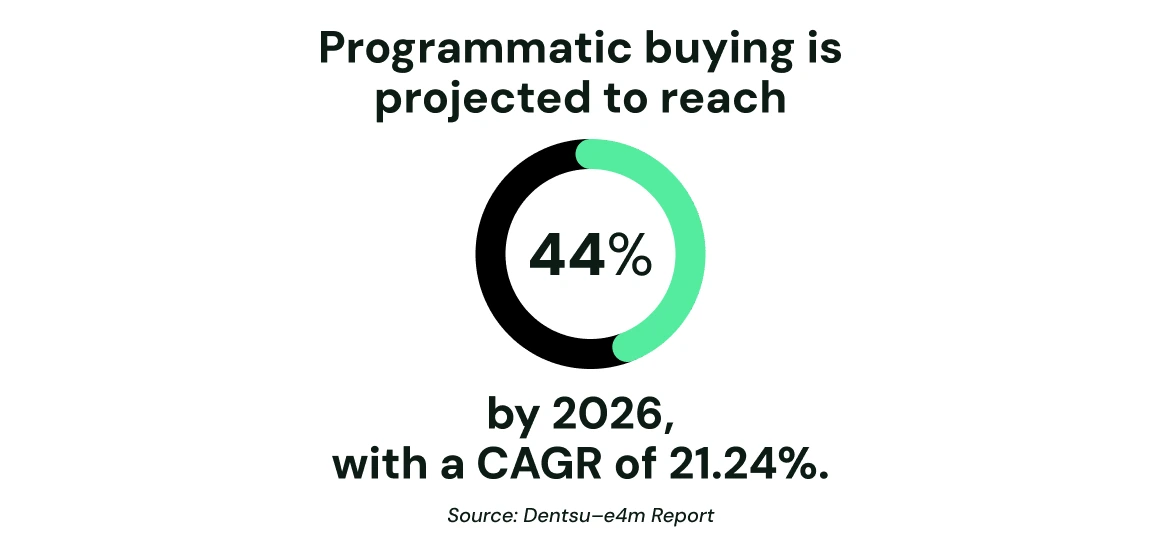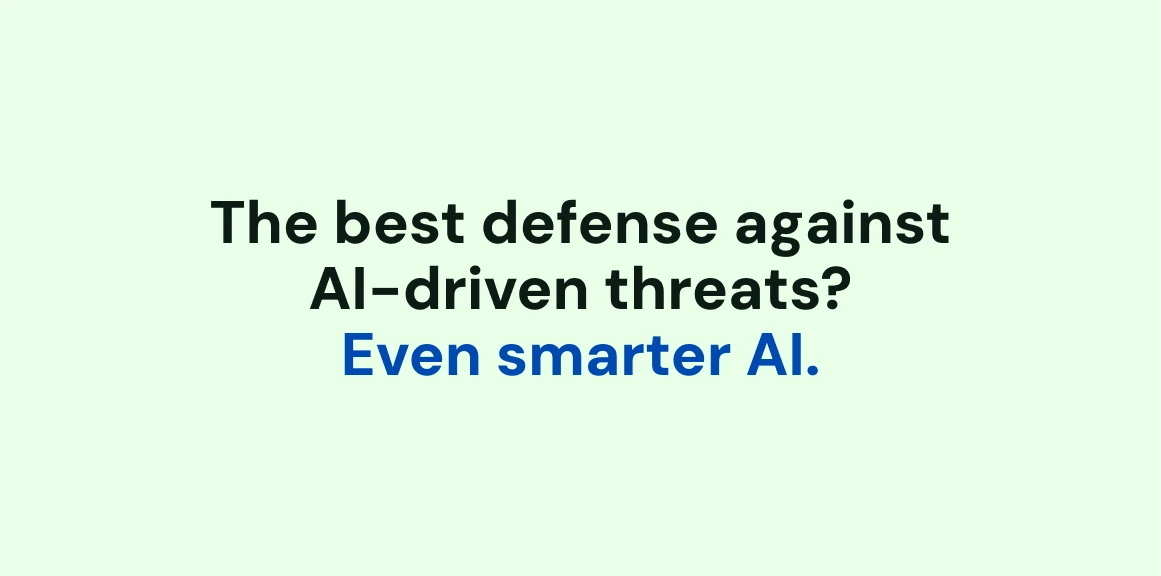August 25, 2025
|13 minute read

In the milliseconds it takes for a webpage to load, a high-stakes decision is made that can define your brand’s reputation. When your meticulously crafted B2B advertisement appears, will it sit proudly beside a credible industry analysis in a trade journal? Or will it materialize next to a sophisticated deepfake video of a CEO spreading market misinformation, just as a key prospect is doing their due diligence on your company?
One click, one bad placement, and a multi-million dollar deal could be put in jeopardy before your sales team even knows what happened.
This is the central, unavoidable challenge of modern digital advertising. Artificial Intelligence (AI) has given B2B marketers unmatched power for precision targeting and campaign efficiency.
However, this double-edged sword also introduces complex new threats to your brand’s safety. Navigating this landscape requires more than just defensive tools—it demands a proactive and intelligent strategy to protect your most valuable asset: your brand’s integrity.
What you’ll learn in this guide
Not long ago, brand safety was a straightforward concept. Marketers relied on whitelists of trusted websites and keyword blocklists to steer clear of universally unsafe categories like violence, adult content, or hate speech.
But this approach had its flaws. A brand might block the word “crash” to avoid negative associations, only to miss out on opportunities to appear alongside stories like “crashing the market with innovative technology.” It was a blunt instrument: manageable, but inefficient.
Then came programmatic advertising.
The automation of ad buying across millions of websites brought immense efficiency—but at a cost. Marketers lost visibility and control, as trillions of ad auctions now happen daily in a “programmatic black box.” Manual oversight became impossible.
This shift from direct placements to algorithm-driven delivery created a new, complex brand safety challenge: protecting brand integrity in an unpredictable and opaque digital ecosystem.

According to the Dentsu-e4m report, programmatic buying accounted for 42% of digital ad spend in 2024—a 21% increase over the previous year. This growth is set to continue, with programmatic expected to claim 44% of the market by 2026, growing at a CAGR of 21.24%.
With such a significant portion of ad spend now mediated by algorithms, brands are increasingly surrendering control over where their ads appear. In this reality, a reactive approach to brand safety is no longer enough.
A strategic, AI-conscious model is essential to maintain brand integrity in a fast-evolving, automated ecosystem.
The modern landscape demands a shift from basic brand safety to strategic brand suitability. For B2B, where reputation and trust are paramount to long sales cycles and high-value deals, this is non-negotiable.
It’s no longer enough just to avoid inappropriate content; the goal is to find environments that reinforce expertise and credibility proactively. Using advanced AI to analyze context and sentiment, leaders can ensure their brand appears alongside positive industry analysis, not reports of corporate failure.
This transforms brand safety from a defensive cost center into a performance driver, maximizing ROI by ensuring marketing investments build trust with high-value accounts.
For global B2B companies, brand safety impacts investor confidence, partner relationships, and client trust. An ad appearing next to false financial news or polarizing content can jeopardize long-term deals and market perception.
Modern brand safety demands AI-powered tools that assess tone, emotion, and values alignment, not just content classification. It requires integration across marketing, legal, and compliance teams to enforce governance at every touchpoint.
For enterprise marketers, the question is no longer “How do we avoid bad content?” but “How do we align with the right content, at the right time, in the right context?”
In a crowded, volatile media landscape, brand safety is no longer optional. It’s a differentiator—and a prerequisite for trust.
In B2B, where long sales cycles, high-value deals, and deep levels of trust are paramount, reputational damage from a single ad misplacement can have severe, long-lasting financial consequences.
This challenge is amplified by a complex digital landscape that now includes social media, Connected TV (CTV), and Digital Out-of-Home (DOOH), with AI becoming an engine for creating new and subtle threats.
For marketing leaders, the risk is magnified by modern challenges like misinformation, the scalable creation of synthetic content via generative AI, and rapidly shifting cultural norms.
These threats are especially difficult to manage across fragmented teams, multiple agencies, and fast-moving environments.
However, the core problem is often internal: a lack of clear, documented accountability for who owns brand safety risks and defines acceptable tolerance levels.
Technology and AI filters alone cannot solve this governance gap. Therefore, the recommended strategy is to shift from a rigid, purely technological approach to a dynamic model that blends advanced tools with expert human judgment to navigate nuance and context.
The B2B world is built on expertise and trust. AI-generated content, especially deepfakes, directly attacks this foundation.
Imagine a deepfake video of a respected industry analyst making false negative claims about your market, with your company’s ad for a related solution appearing right next to it. That accidental association is instantly damaging and can be screen-captured and shared by competitors.
This risk extends beyond video to include AI-generated “expert” blogs that promote flawed data or fake financial reports designed to manipulate market perceptions. The threat is so significant that the United Nations has called for stronger global measures to counter deepfake content before it erodes public and corporate trust (Reuters).
AI algorithms are powerful, but they often lack true human-like contextual understanding. They match keywords, not intent.
This leads to jarring placements that can harm your reputation. Consider an advertisement for your cloud security software appearing next to a major news story detailing a catastrophic corporate data breach.
While the keywords match, the context makes your brand appear tone-deaf, incompetent, or even predatory, undermining your solution’s credibility at a critical moment.
For a sophisticated business audience, transparency is non-negotiable. B2B buyers are researchers; they can spot a fake from a mile away.
If a B2B technology firm used a fully AI-generated video testimonial of a “client” praising its platform, its discovery by tech-savvy buyers would be catastrophic. Accusations of deception would shatter the brand’s authenticity.
This damage isn’t just external; it affects employee morale and the ability to recruit top talent who want to work for a company they can trust. In B2B, recovering from a trust deficit is incredibly difficult.
A huge and insidious drain on marketing budgets comes from low-quality MFA sites. These are websites algorithmically generated and filled with stolen or spun junk content, designed for one purpose: to collect ad revenue through programmatic channels.
They often use deceptive practices like ad stacking (layering multiple ads on top of each other) and pixel stuffing (cramming ads into a single pixel) to defraud advertisers.
A landmark study by the Association of National Advertisers (ANA) found that MFA sites account for a staggering 15% of programmatic ad spend, siphoning billions away from legitimate publishers and impactful campaigns into a “digital black hole.”

Modern brand safety platforms now offer a multi-layered defense system that operates at the speed of programmatic advertising, vetting ad placements in real time.
This goes far beyond simple keywords. UsingNatural Language Processing (NLP), the AI acts like a speed-reader with perfect comprehension. It analyzes the text on a page to understand not just the topic, but also the sentiment (positive, negative, neutral), the tone (e.g., clinical, satirical, angry), and the nuance of the language.
Simultaneously,computer vision technology scans images and video frames for unsafe or inappropriate visuals. Together, these tools can tell the difference between a serious news report on a corporate crisis and a satirical article in a business magazine, ensuring your ads are placed in genuinely suitable environments (Supermetrics).
The most effective AI tools work proactively in milliseconds before the ad is even bought. This is known as pre-bid analysis.
Before your ad platform places a bid on an available ad slot, the safety AI analyzes the page content, scores it against your brand’s specific safety and suitability rules, and blocks the bid entirely if the environment poses a risk.
This prevents your ad from ever appearing in the wrong place.
Beyond content, AI is crucial for sniffing out ad fraud. It is trained to recognize the difference between human and non-human behavior.
It can identify patterns indicative of botnets, click fraud (bots generating fake clicks), impression fraud (fake views), and domain spoofing (when a low-quality site masquerades as a premium one).
This ensures your budget reaches real business audiences, not criminal operations.
Despite its power, treating AI as a “set it and forget it” solution is a recipe for failure. The technology has blind spots and inherent limitations that demand strategic management.
The “Cold Start” Problem: AI needs historical data to make accurate predictions. When a completely new global event or social issue emerges suddenly (like a new health crisis or geopolitical conflict), the AI has no pre-existing data on how to classify content related to it. During this “cold start” period, the AI is more likely to make errors, either allowing unsafe placements or aggressively overblocking safe ones until it has been trained on the new context.
Given AI’s limitations, human oversight isn’t a legacy function—it’s an essential strategic component. The smartest brands build a brand safety “Center of Excellence” where human experts guide the technology. This “human-in-the-loop” approach is critical for success. This team typically includes an Ad Ops specialist, a data analyst, a brand strategist, and a policy expert.
These human strategists provide the contextual judgment, ethical reasoning, and industry expertise that AI lacks. Their job isn’t to review every placement, but to manage the system. A strong human review process involves:
The pinnacle of brand protection moves beyond simply avoiding bad content to proactively seeking the perfect environment. This is the crucial evolution from brand safety tobrand suitability.
Where brand safety sets the floor (the absolute minimum standard of what to avoid), brand suitability designs the entire house (defining the ideal tone, context, and environment for your brand).
This tailored approach aligns ad placements with your specific values and messaging. For a cybersecurity firm, a neutral article on data privacy might be “safe,” but an in-depth analysis of emerging enterprise security threats is “suitable”—and far more valuable for reaching the ideal customer mindset (Seekr).
Developing a suitability framework is a strategic exercise that involves three key steps:
The landscape is constantly evolving, driven by three key forces:
Artificial Intelligence offers immense opportunities for B2B marketers, enabling a level of precision and scale that was once unimaginable. But it also creates profound risks to the currency that matters most in business:trust and reputation.
Success lies not in choosing between innovation and responsibility, but in skillfully balancing them. The future of advertising belongs to those who learn to lead the technology, not just follow it.
By combining the power of sophisticated AI tools with the wisdom of human oversight—and by elevating your goal from mere safety to holistic brand suitability—you can navigate this new frontier with confidence.
This approach will not only safeguard your brand’s hard-won reputation but will also build a more resilient, authentic, and profitable connection with your clients.
Please enter your email address so we can send you a one-time pass code and verify if you are an existing subscriber.